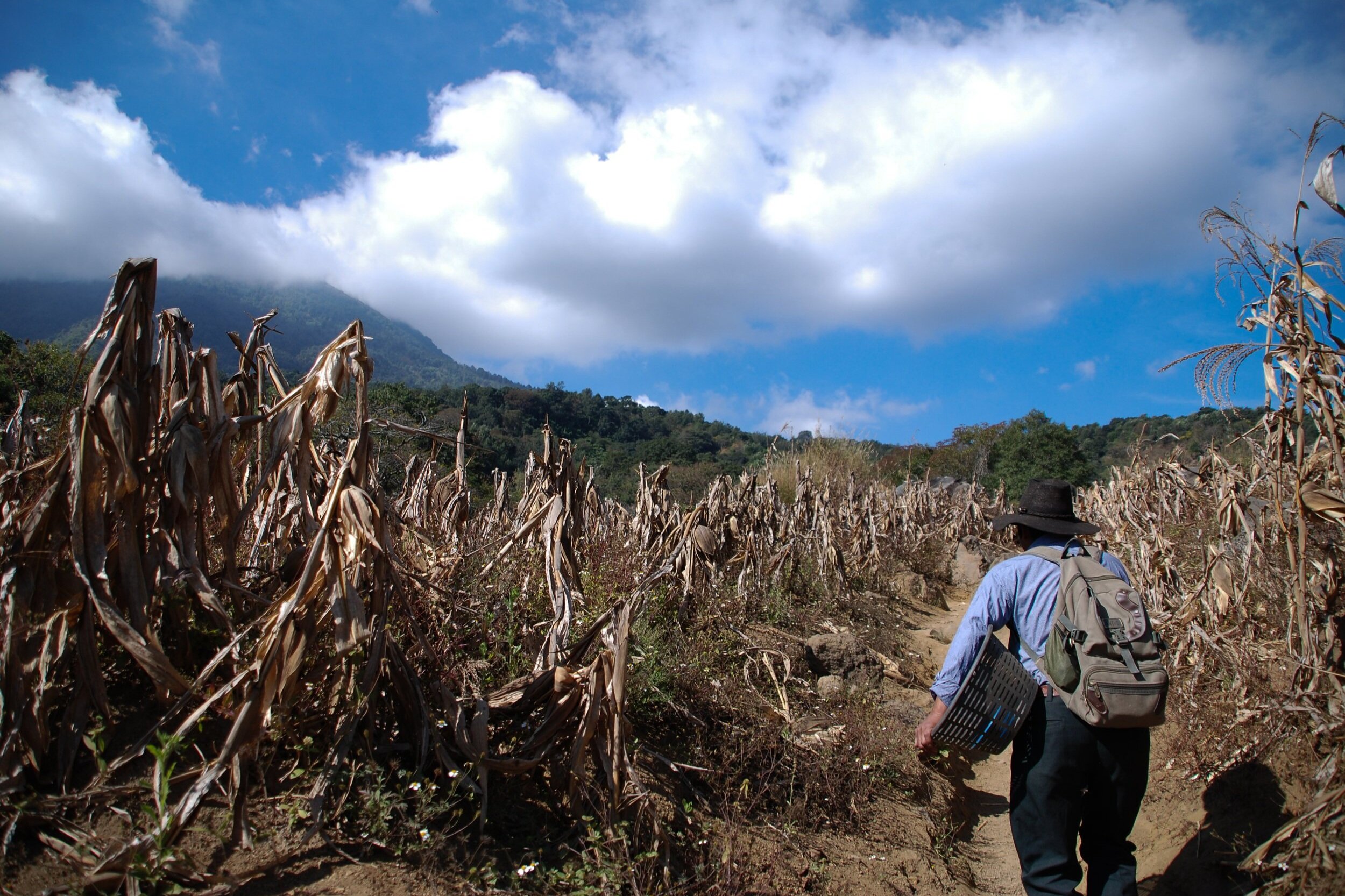Guatemalan Coffee Beans from the Traditional Atitlán Region
Guatemalan coffee beans from the Atitlán region are renowned for their pleasant acidity and rich aroma. This region is one of Guatemala’s eight specialty coffee growing regions designated by ANACAFE (the National Coffee Association of Guatemala), officially called Traditional Atitlán in recognition of the palpable Mayan indigenous culture and the region’s iconic Lake Atitlán.
Here are some quick facts about Guatemalan coffee beans from the Atitlán region:
Atitlán Coffee Facts:
Elevation → 5000 - 5600 ft (1,640 - 1,706 m)
Rainfall → 72 - 92 in (180 - 233 cm)
Temperature → 68 - 72ºF (20 - 22ºC)
In the cup → Delightfully aromatic with a bright citrus acidity and full body
Geography and Coffee Cultivation
Lake Atitlán is located in the heart of the western highlands of Guatemala in the Sierra Madre mountain range. Formed nearly 85,000 years ago, it is the deepest lake in Central America and encircled by three inactive volcanoes — Atitlán, Tolimán, and San Pedro. The collection of volcanoes and mountains tower over the lake’s shores to create an imposing backdrop to the twelve towns nestled in their foothills.
Guatemalan coffee beans from the Atitlán region are cultivated between 5,000 and 5,600 feet above the sea level (1,640 - 1,706 meters), along the lake’s shores and on steep slopes of these volcanoes. The high humidity, volcanic proximity, and daily Xocomil winds stirring cold lake waters create a distinct microclimate that gives Atitlán’s coffee a unique profile. Xocomil, a word with roots in both the Mayan Kaqchikel and Mayan Tz'utujil languages, is the term used to describe the winds distinct to Lake Atitlán that occur in the late morning and mid afternoon when the warm winds from the Pacific Coast collide with cooler northern winds.
Climate and Conditions for Coffee Growing
According to ANACAFE, Atitlán’s soil is the richest in organic matter, giving way to prime for coffee plants. The coffee harvest begins in November and ripened red coffee cherries are picked until the end of April, when the first showers of the rainy season arrive. The region receives between 72 and 92 inches (180 - 233 centimeters) of rainfall during the year, the majority of which is during the rainy season, which is typically from late April through November. Humidity levels in the surrounding Lake Atitlán are between 75% and 85% and temperatures are a pleasant 68 - 72ºF (20 - 22ºC) throughout the entire calendar year.
Atitlán Coffee in the Cup
Atitlán coffee beans are appreciated by the international specialty coffee community for their distinct acidity and aroma. ANACAFE describes beans from this region as “delightfully aromatic with a bright citrus acidity and full body.” While known for its acid tang, Atitlán beans can also please palates looking for sweeter tastes with combinations of chocolate, caramel, and fruity notes.
Cultural Richness of the Atitlán Coffee Region
Apart from its breathtaking views and high-quality coffee, Lake Atitlán is known for its cultural richness. The lake is surrounded by twelve indigenous Mayan Kaqchikel and Mayan Tz'utujil towns. Atitlán, originally a Nahuatl word, translates to “the place where the rainbow gets its colors,” which arguably serves as an indicator of the vibrant and colorful culture that these Mayan communities so fervently preserve.
We can turn to the communities surrounding Lake Atitlán as inspiration for environmentally friendly coffee growing practices. Preserving native seeds and fauna is a pillar of Mayan indigenous spirituality and many coffee farmers in the Atitlán region honor this tradition and respect of La Madre Tierra (or Mother Earth) as they diversify their land and livelihoods through coffee farming.
Coffee cultivation is not inherently part of Mayan culture, but these communities have woven coffee growing into their traditional farming practices throughout the last half century, bringing the beans they harvest to the attention of the broader international specialty coffee community. We uplift these small scale producers and their commitment to making coffee cultivation sustainable for their communities and the planet.
Enjoy Atitlán Coffee Yourself and Order Today
De La Gente is proud to offer beans from the Atitán region to our green and roasted coffee customers. Whether it’s an old favorite or you’re trying something new, we invite you to indulge in Guatemalan coffee beans from the Traditional Atitlán specialty coffee region.
Consider ordering a 12 bag of Atitlán coffee to brew at home or check out our wholesale green and roasted coffee options. We’re happy to have you as part of the De La Gente community of conscientious coffee consumers.
Order samples






